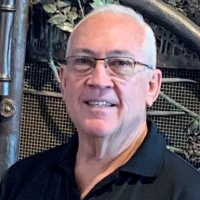
CodeNotes: Velocity Limits in the 2021 International Swimming Pool and Spa Code
This CodeNotes resource provides an overview of Velocity Limits for swimming pools and spas outlined in the 2021 International Swimming Pool and Spa Code.
This edition of CodeNotes — Velocity Limits in the 2021 International Swimming Pool and Spa Code — is based on the 2021 International Swimming Pool and Spa Code®
Introduction
Velocity is the speed at which water moves through pipe. It is calculated in both feet per second and centimeters per second. Velocity is used to help designers select the minimum pipe size for the design flow rate for a specific application. Increasing the pipe size while maintaining the same flow rate reduces velocity in the system (see Figure A).
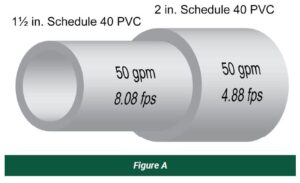
NOTE: The velocity limits in the 2021 ISPSC are found in Section 311.3 and in the standards listed below. These standards are referenced in the code and all velocities are based on maximum design flow rates for the specific feature and piping circuit, e.g., pool recirculation versus a water feature. Lower flow rates are allowed and encouraged.
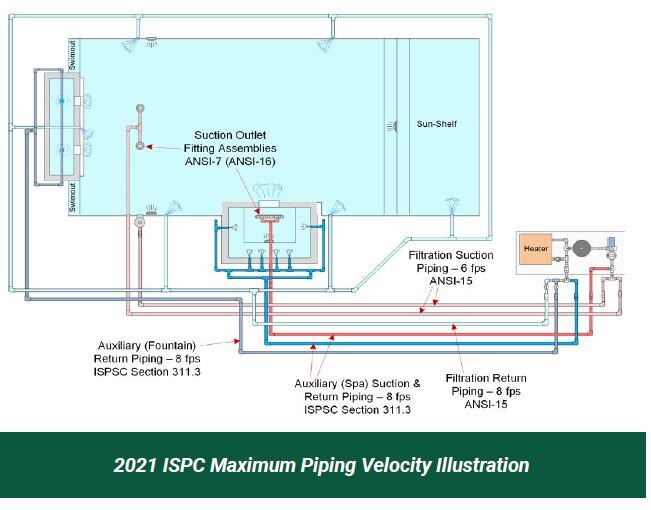
- ANSI/APSP/ICC-4, 2012 Standard for Aboveground/ Onground Residential Pools
- ANSI/APSP/ICC-7, 2020 Standard for Suction Entrapment Avoidance
- ANSI/APSP/ICC-14, 2019 Standard for Portable Electric Spa Energy Efficiency
- ANSI/APSP/ICC-15, 2011 Standard for Residential Swimming Pool and Spa Energy Efficiency
- ANSI/APSP/ICC-16, 2017 Suction Fittings for Use in Swimming Pools, Wading Pools, Spas and Hot Tubs
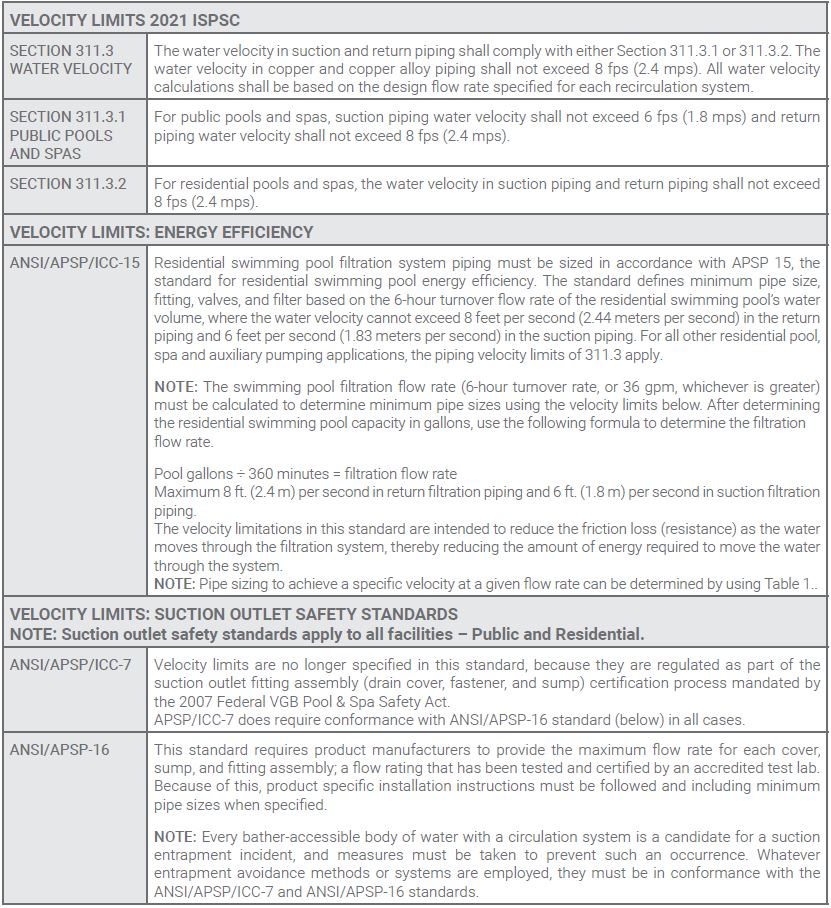
Matching the velocity in all system piping achieves a relative balance of flow on the suction and return sides of the system. This helps prevent mismatched systems (i.e., over-pumping and under-piping), which leads to highly inefficient systems creating high pressure, excessive noise, vibration, and potentially decreased equipment life.
CodeNotes Design Tip #1: The requirement for the listing and labeling of plastic pipe to NSF 14 ensures that the pipe manufacturing process is closely monitored to ensure the quality of the product. The pipe used in the circulation system must be listed and labeled to any of the standards identified in Table 311.4.
CodeNotes Design Tip #2: Fittings for the pipe material chosen must comply with any of the standards indicated in Table 311.4. Fittings must be listed and labeled to the standard. The exceptions recognize special fitting assemblies, such as suction outlet fittings, skimmers, and gutter overflow grates, that do not meet the standards indicated in Table 311.4.1 but are an integral part of many pools and spas designs.
CodeNotes Design Tip #3: The choice of what pipe material to use in an application must also consider the pressure and temperature of use.
See the 2021 International Swimming Pool and Spa Code and Commentary for additional information on these code requirements and many others.
The Design/Build Process for Compliance
Compliance requires conformance with ISPSC Section 311.3 and all referenced standards. For best results the following design/build sequence is recommended:
- Design the body of water, and then calculate the water volume to determine the filtration flow rate. When applicable, design and specify flow requirements for all other features, such as therapy jets, fountains, solar heaters, sanitizers, etc. Using these design flow rates, use the velocity limits in the code and the referenced design standards to size all piping.
- For residential swimming pools:
a) Calculate the pool’s filtration flow rate as described above to comply with ANSI/APSP/ICC-15a and size the suction filtration piping to comply with the lower velocity limit in this standard. For velocities in all other piping, see ISPSC Section 311.3.
b) Then check pipe sizing for compliance (See Table 1, below). - Finally, ensure that all suction outlet fittings, piping and components, are designed in compliance with ANSI/APSP/ICC-7, 2020 Standard for Suction Entrapment Avoidance (or most recent version), and that the suction outlets, if any, are certified by a test lab in conformance with the ANSI/APSP-16, 2017 Standard for Suction Fittings (or most recent version). Compliance with both the ANSI/APSP/ICC-7 and ANSI/APSP-16 standards requires the suction system components to have a flow rating higher than the maximum system flow rate of any installed systems.
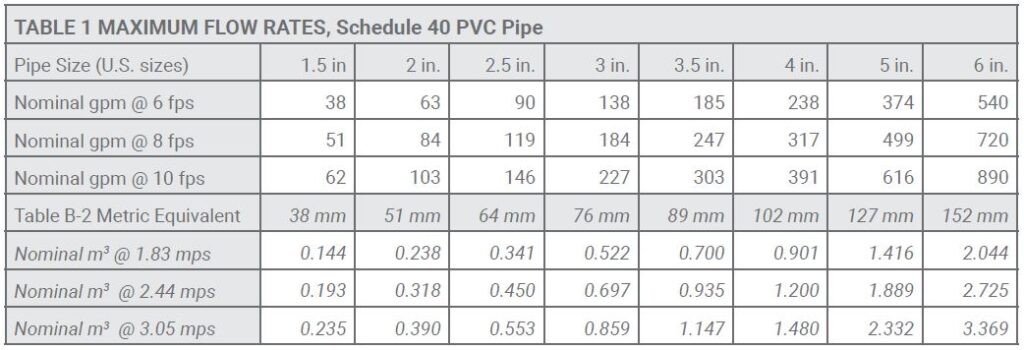
Click here to access more CodeNotes resources provided by the International Code Council.
